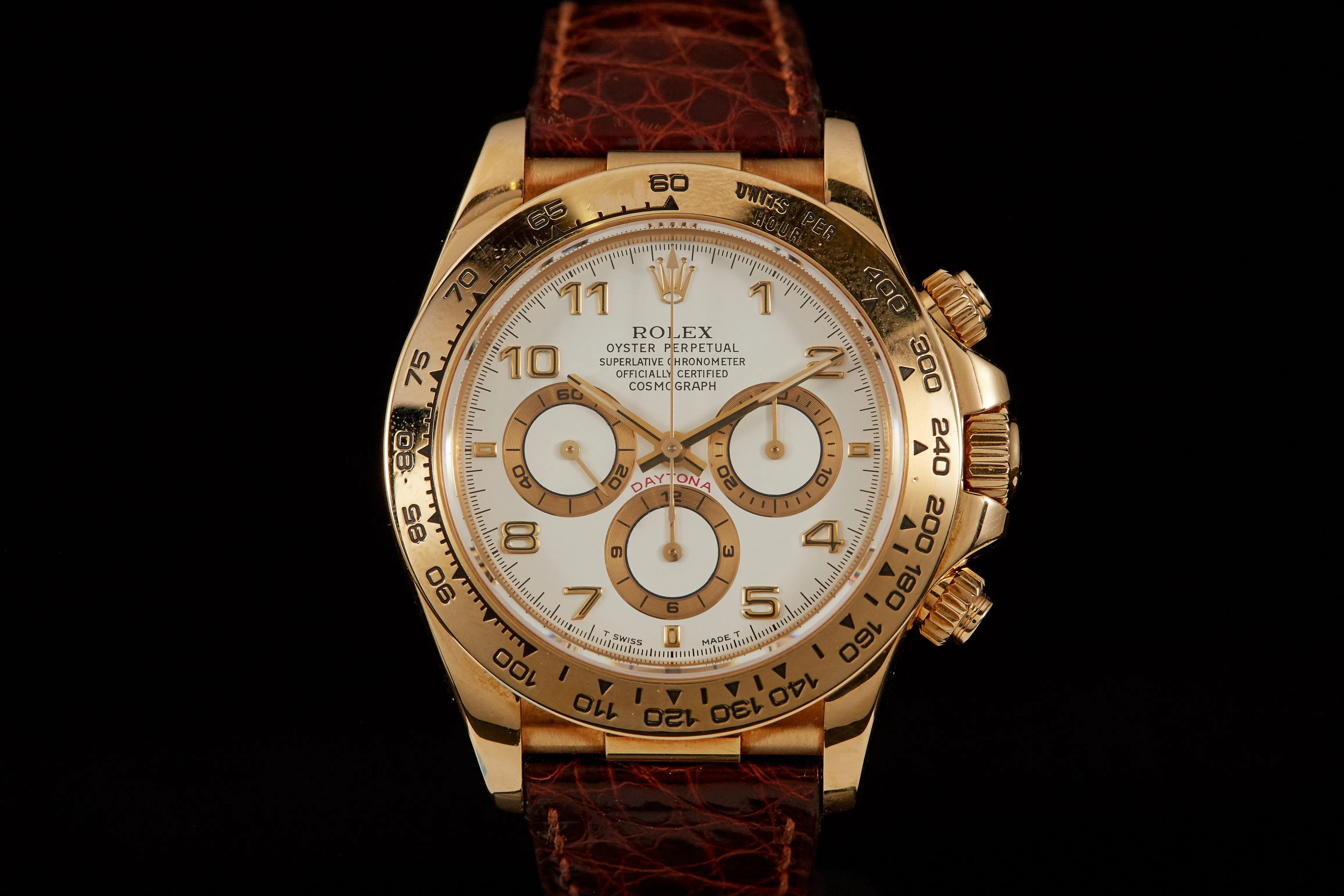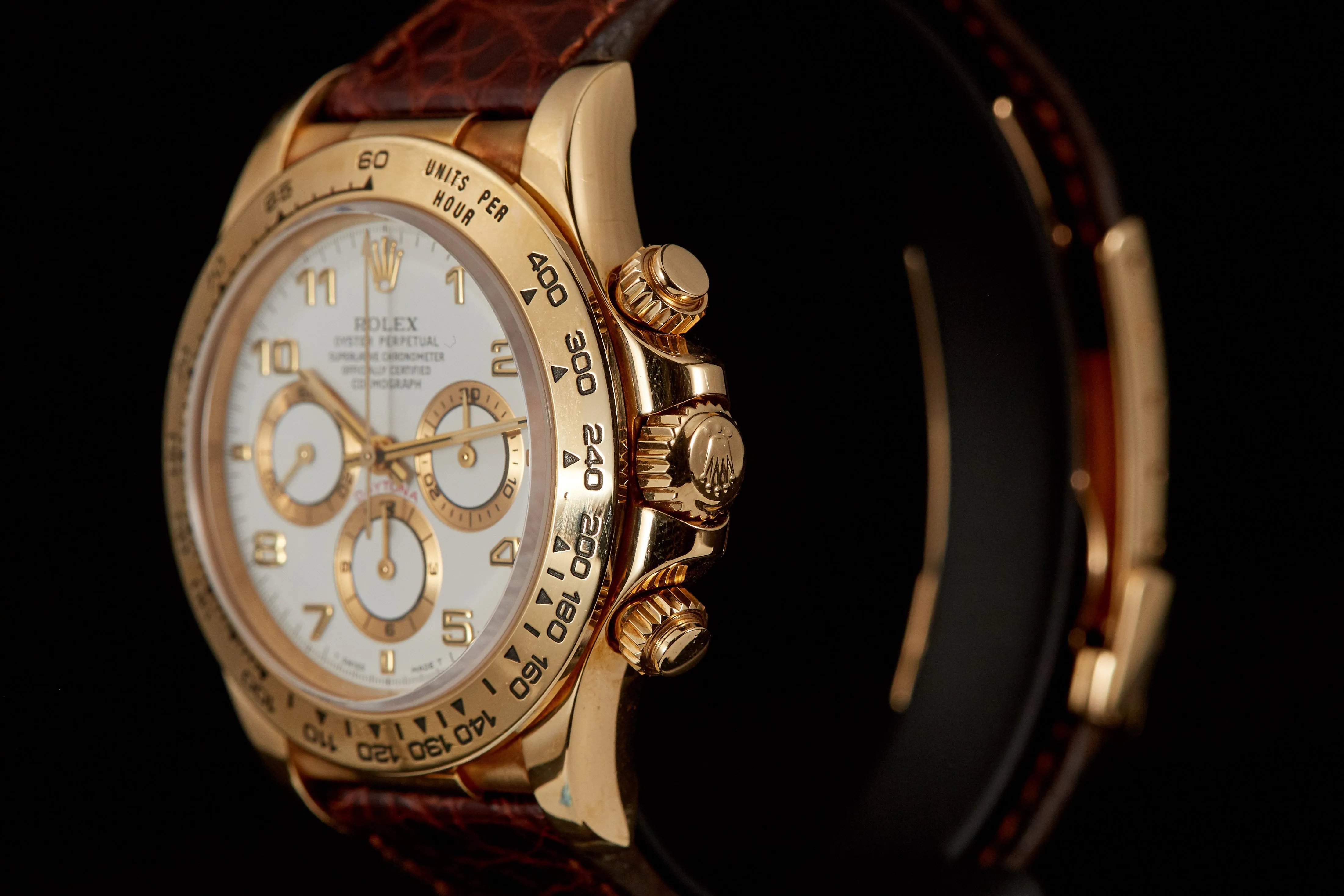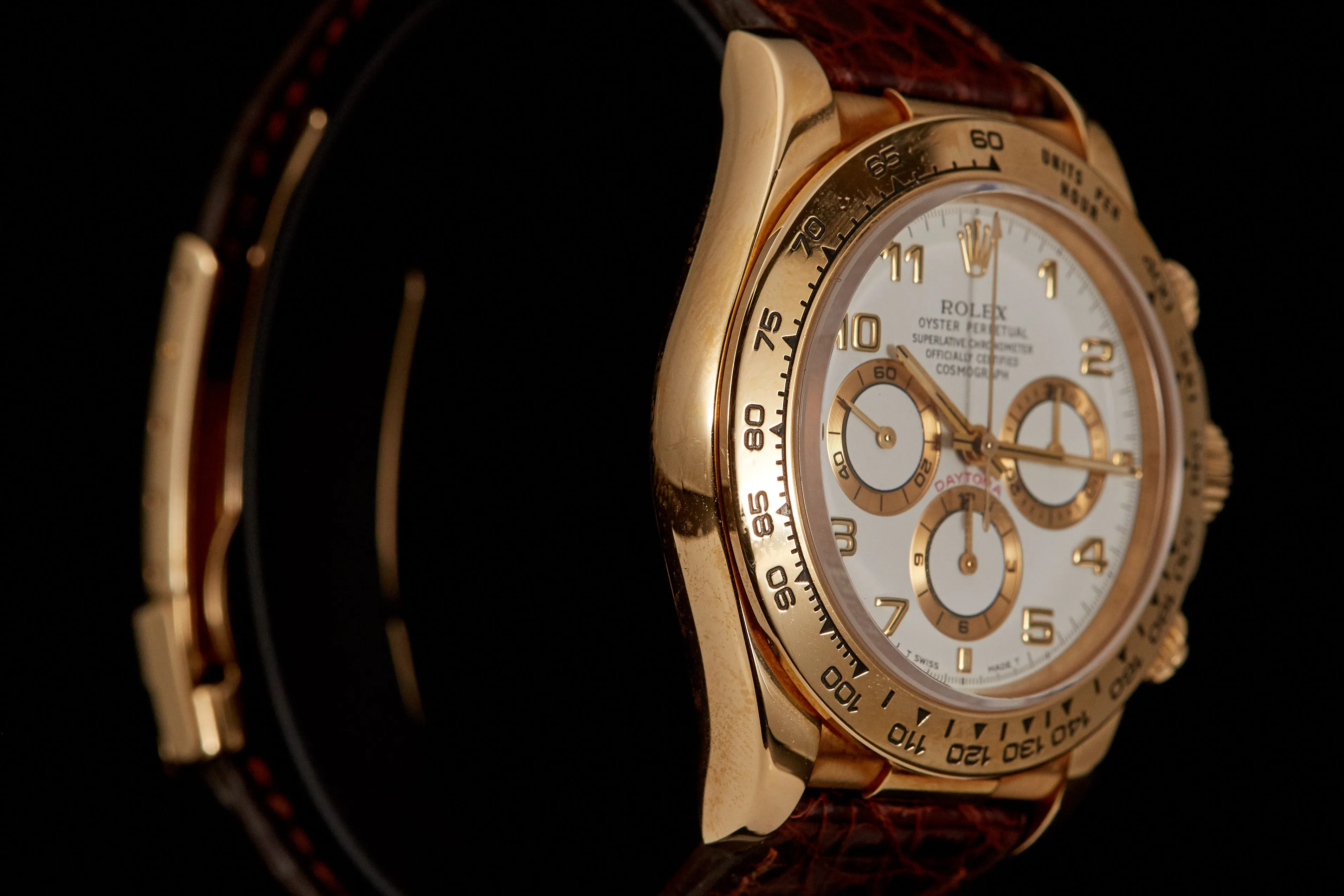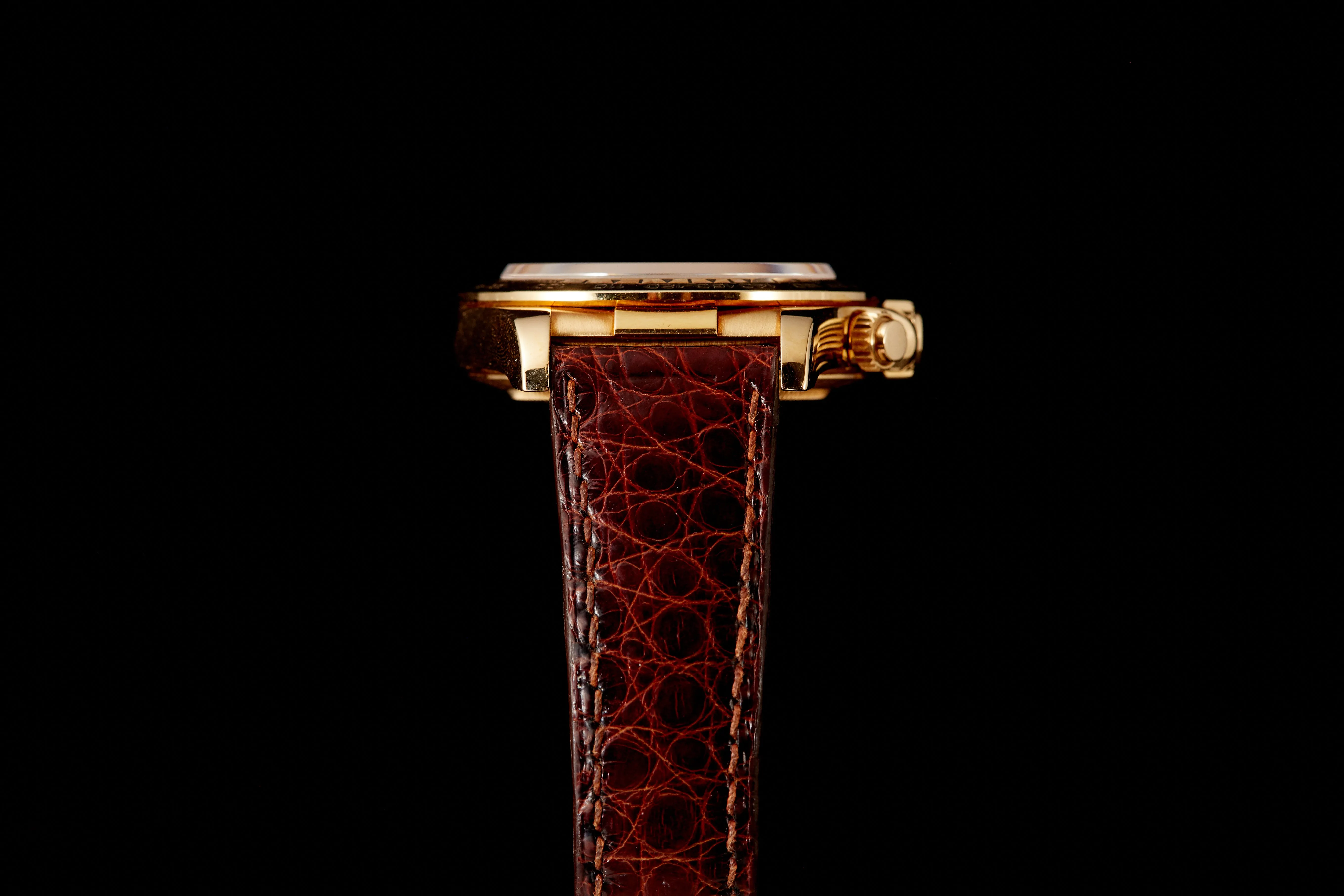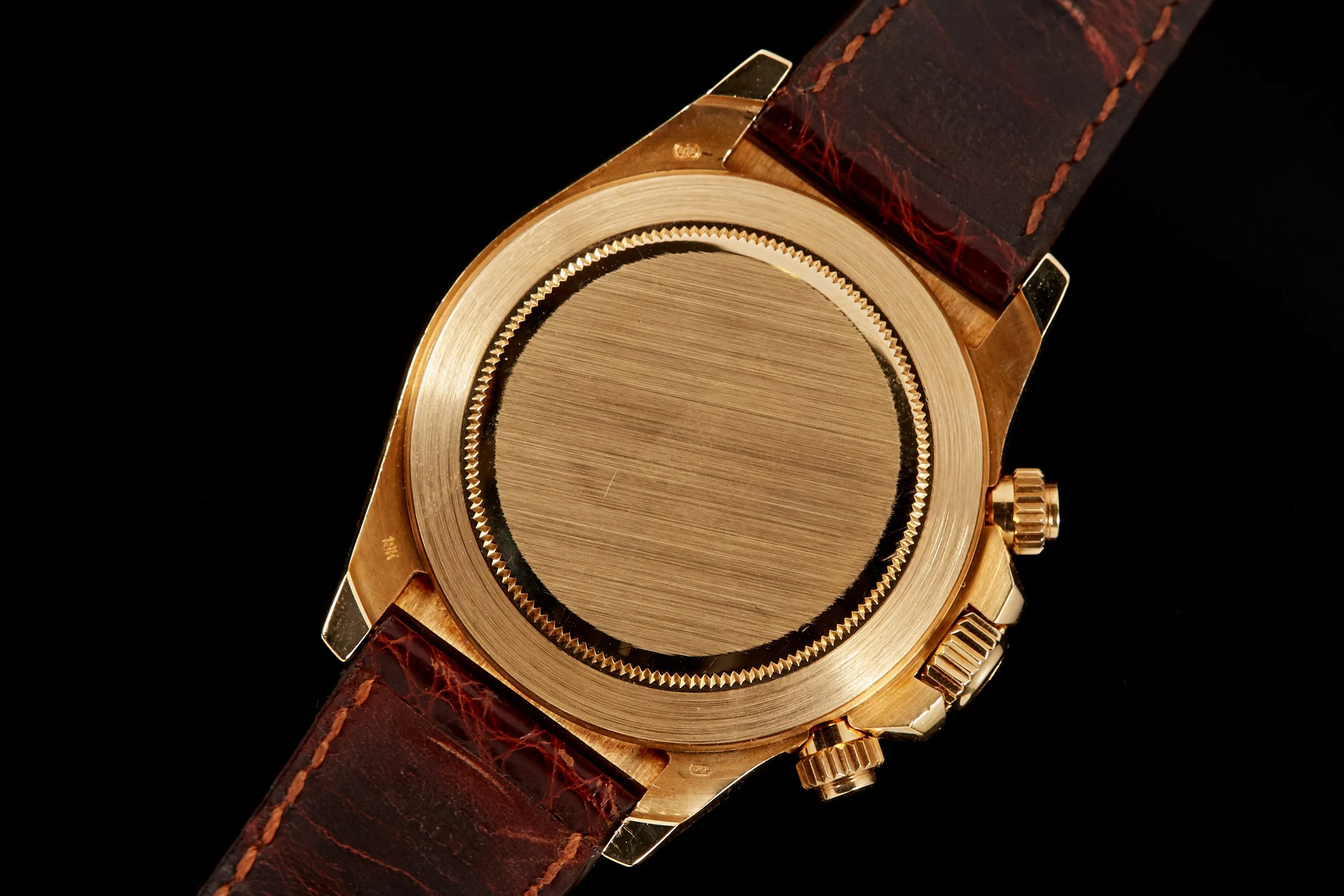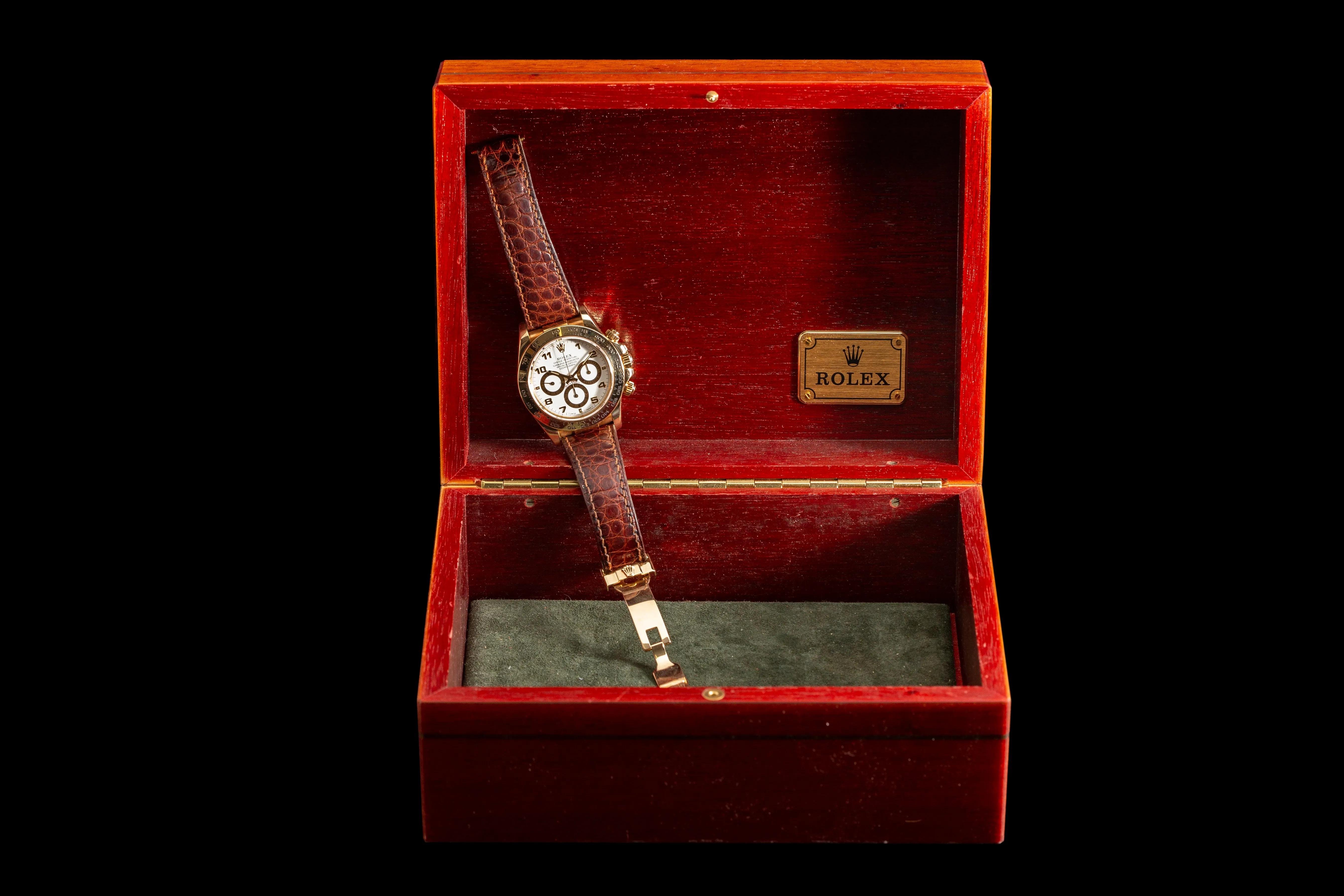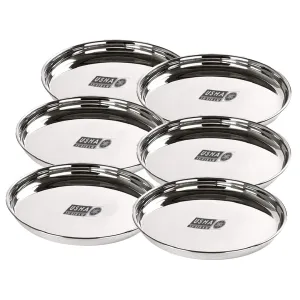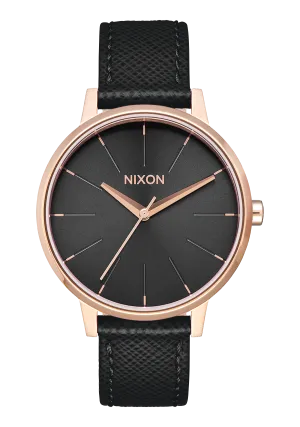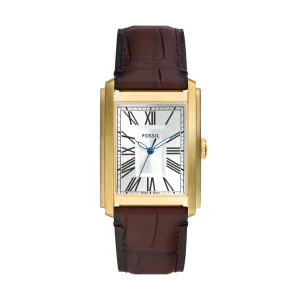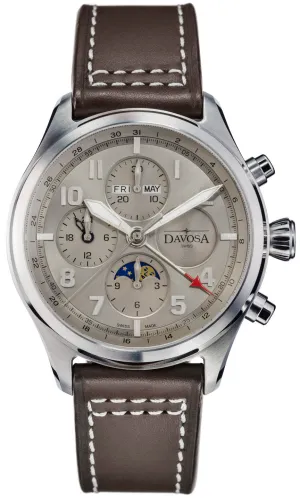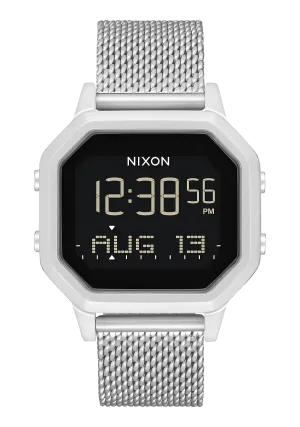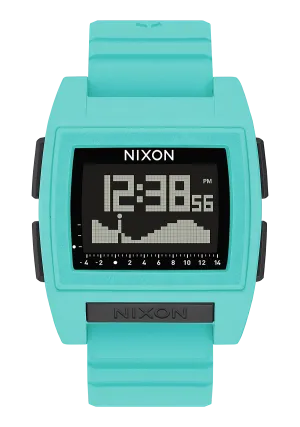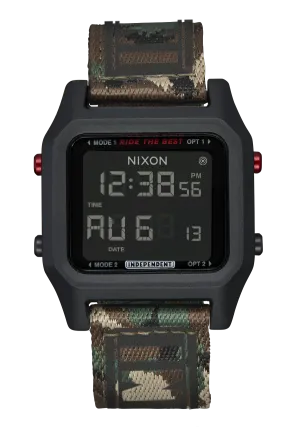Why We Love It
We've always found it interesting that the Rolex Daytona - arguably the most recognizable and desirable timepiece in production - is most desirable to collectors when produced with a relatively pedestrian stainless steel and fitted with inner workings produced by third-party suppliers.
Look no further than the Phillips New York watch auction on October 26, 2017, where an exotic dial Rolex Daytona owned by Paul Newman became the most expensive wristwatch ever sold at auction (nearly $18 MILLION dollars). This steel watch was fitted with a Valjoux 72 manually-winding mechanical movement, regularly found in timepieces with values well under $5K.
Sure, the iconography is apparent, and we're not arguing that it sold for exactly what it was worth. But it does make you wonder why there is such a tremendous disparity for the later automatic winding versions - and those produced in precious metals.
For comparative purposes, have a look at this gorgeous Reference 16518, dating to the mid 1990s. Featuring a solid 18K gold case, white dial with applied Arabic indices and Tritium luminous elements, it represents a tremendous value proposition at under $20K. Oh, and it also features the highly desirable automatic winding Calibre 4030 supplied by Zenith - making it an example of the so-called 'Zenith Daytona' generation.
Very much exemplary of the 'Neo-Vintage' Rolex era that is rapidly appreciating in the collector community, we'd bet our annual wages that this pricing disparity won't last too much longer, and a market adjustment for solid gold models - particularly those with Zenith movements - is coming, soon.
Don't say we never told you so.
The Story
The Daytona is Rolex's only Chronograph in current production. Before the Cosmograph and Daytona models, Rolex had produced dressier chronographs since the 1930s, setting the mold for what would ultimately become the single best-known chronograph in the world. These early watches, like many chronographs of the period, had monochromatic dials and a tachymeter ring printed on the outer edge of the dial.
The design of the Cosmograph gradually changed, but the Oyster case remained at its heart. A change in dial configuration (mainly a shift from monochrome to the "panda" color schemes now closely associated with it) along with the removal of the tachymetric scale to the bezel made it a clear sportsman's watch. With the addition of the name Daytona in 1964 (taken from the 24 Hours of Daytona Race which Rolex started sponsoring in 1962), the motorsports association was cemented.
The earliest Daytonas relied on that well known manually-wound workhorse calibre - the Valjoux 72, used by Heuer in both their and . But in 1988 Rolex released a Daytona using Zenith's El Primero movement, making the Cosmograph Daytona now worthy of the appellation "Oyster Perpetual." These "Zenith" Daytonas -particularly with the white dial - have gained serious traction over the past decade on the vintage chronograph market, with potential to appreciate in value.
Still, Rolex has never been the sort of brand to rely on another company's technology for long, so when the Reference 116520 debuted in 2000 at BaselWorld, it made headlines.
The result of years of R&D, the movement used in the Reference 116520--the Calibre 4130--was the manufacture's first new in-house caliber in five decades. The Calibre 4130's construction--consisting of a vertical clutch, a larger balance wheel, and fewer screws--made it far more accurate (and more easily-serviced) than any of Rolex's previous self-winding chronograph calibers. While the current generation of in-house calibres might be 'better' movements from a technical perspective, the era of 'Zenith Daytonas' was short lived and from a collectability standpoint, there are few things more tantalizing than a transitional era!





